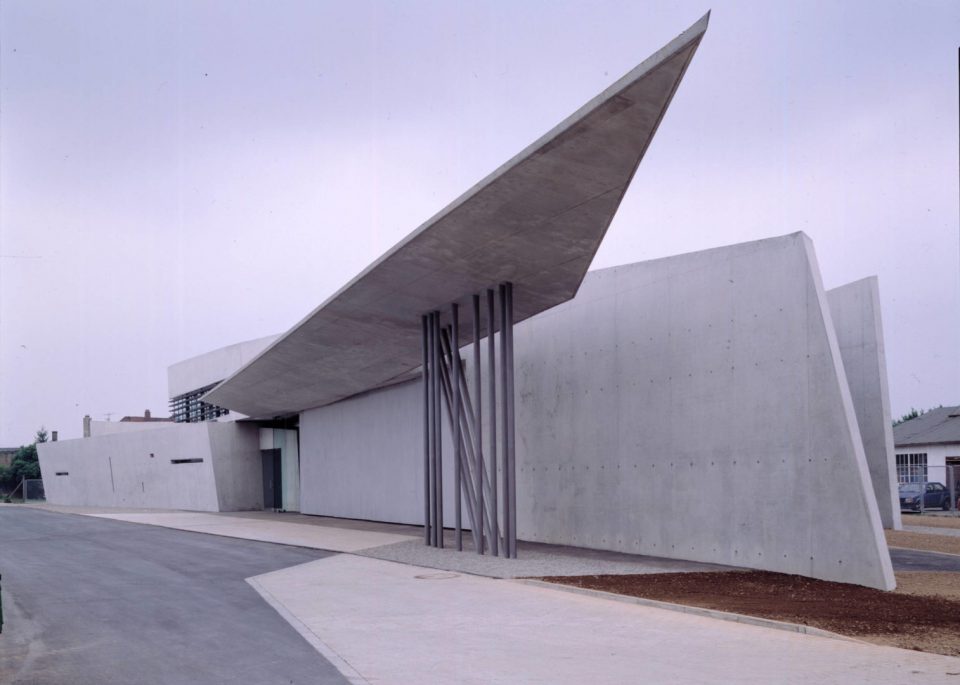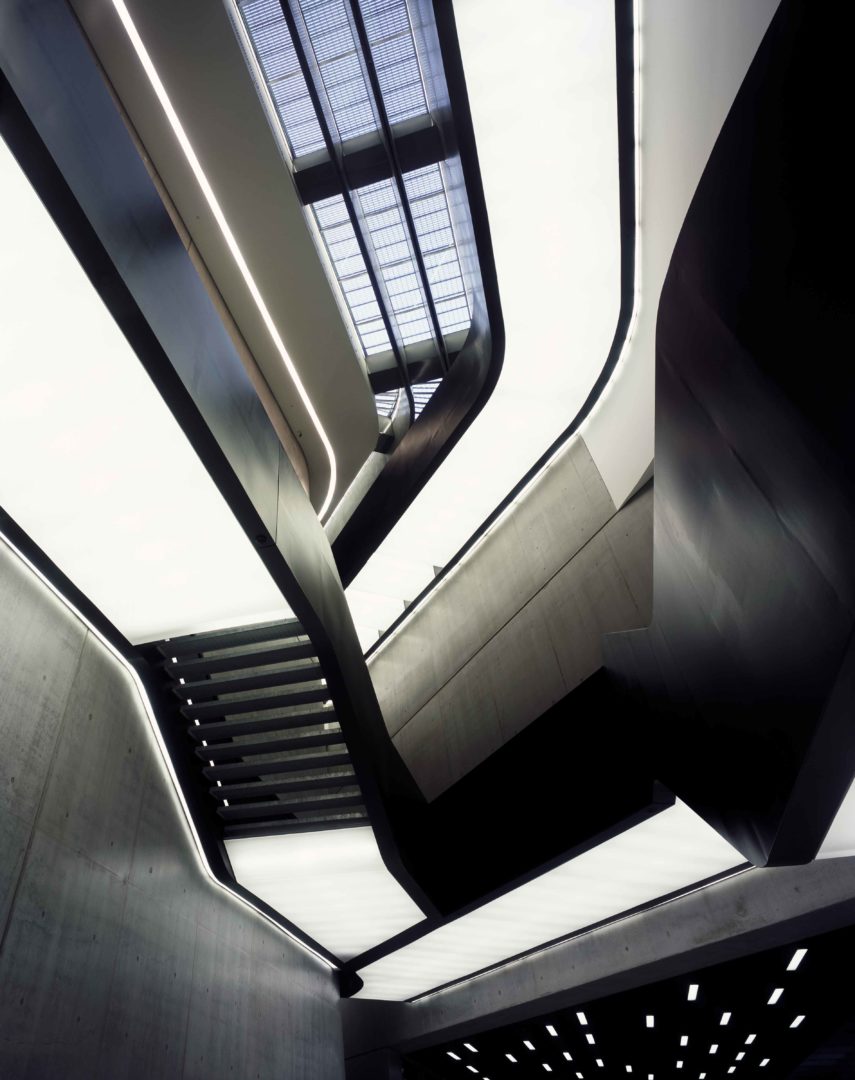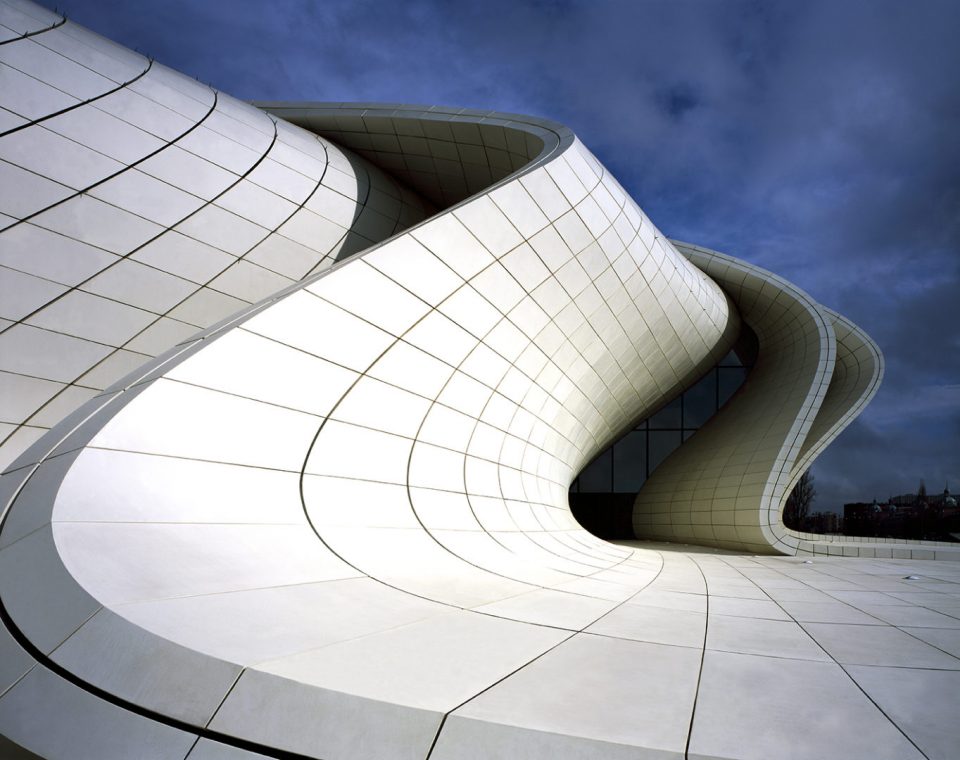Baghdad-born London-educated architect Zaha Hadid is often described as “the greatest female architect of all times”. A statement that is fairly difficult to refute, as she won the Stirling Prize twice, received a Royal Gold Medal for Architecture as well as the title of Dame Commander of the Order of the British Empire. Interestingly, she was the first-ever female winner of the Pritzker Architecture Prize in 2004. This achievement was followed by victories of Kazuyo Sejima in 2010, Carme Pigem in 2017, and most recently Yvonne Farrell and Shelley McNamara- all female architects.
One could potentially conclude that Zaha Hadid was somewhat of a pioneer in her field, specifically in this context. It does not come as a surprise that architecture as a discipline remained heavily male-dominated until very recently and even though the gender-related discrepancy is still visible to this day, Hadid’s exquisite work paved the way for other talented women in art, architecture, and design. Admittedly, her journey to worldwide fame and success was not an easy one, surrounded by obstacles often faced by women; especially women of colour. Hadid herself once expressed in an interview:
“I am non-European, I don’t do conventional work and I am a woman. On the one hand, all of these things together make it easier – but on the other hand, it is very difficult.”
Her unique background combined with artistic prowess, hard-working nature, strong-willed character, and technical excellence propelled her to the very top of the field, leaving an unprecedented legacy across continents. Countless papers, articles, and architecture books discuss the technical aspect of her groundbreaking success as she demonstrably redefined boundaries of architecture and design. However, she also redefined what it means to be a genius – a trait traditionally reserved for men, as famously implied by Linda Nochlin in her essay Why Have There Been No Great Women Artists? (1971).
Of course, it would be impossible to discuss the effects of Hadid’s work in the feminist context without illustrating her story through the lens of her style. Many experts agree that the Iraqi architect’s visionary approach expanded on what we thought was possible in architecture and reinvented the way we view space. Patrik Schumacher, a German architect, and Hadid’s business partner has described her legacy as one of newly discovered freedom as her usage of fluid pulsating curvatures suddenly became a valid architectural possibility.
Hadid had to stubbornly work her way up to such ambitious ventures. Her first major completed project was Vitra Fire Station located in Germany, a building she finished in 1993. With its sharp lines and layered quality of angular walls, Vitra conveys an abstract futuristic feeling and a sense of urgency. Hadid’s deep interest in Russian Suprematism is visibly reflected in her designs.

Vitra Fire Station
Photo: Helene Binet
Sourced from Zaha Hadid Architects Archives
Her next project – MAXXI museum situated in Italy adds a new element that became the signature feature found in Hadid’s work. While it retains the geometric complexity, visitors can also observe intricately designed curvatures bringing fluency and movement to the experience. The use of material such as glass, concrete, and steel is equally intrinsic to the cutting-edge atmosphere inside the museum. Arguably, MAXXI’s design revolutionised the way we view exhibition spaces and curating, where space itself becomes an essential part of the exhibition.

MAXXI Museum
Photo: Helene Binet
Sourced from Zaha Hadid Architects Archives
From there, Hadid completed many major architectural projects, such as the Glasgow Riverside Museum, the London Aquatic Centre, or the Heydar Aliyev Centre, all of which display acute dominance within their surroundings combined with geometric sensibility and fluency. Looking at the Heyday Aliyev Centre, we can put a finger on the revolutionary curvatures giving the impression of plasticity and movement, blending the interior and exterior as well as the building itself with the surrounding space.

Heydar Aliyev Centre
Photo: Helene Binet
Sourced from Zaha Hadid Architects Archives
Looking at Hadid’s projects, few common denominators come to mind. Her work is innovative, dominant yet unobstructive, and redefines boundaries of what is possible. This portfolio of successful ventures could only be achieved by a true pioneer, which Zaha Hadid undoubtedly was regardless of her background.
The link between her work and her artistic persona, albeit elusive, is intriguing to entertain. Many of her former colleagues and former fellow students, such as Schumacher or Eva Jiřičná (Hadid’s close friend and acclaimed architect) described her as very determined, exceptionally ambitious, and a star student. Media and public outlets would often characterise her personality as “larger-than-life”, some would go as far as using descriptors like “diva”. In reaction to this media portrayal, architect Thom Mayne said: “She’s tough because she’s in a profession that takes toughness to get through it. She has this great sense of humor and is actually a very motherly, caring person. And it’s not the part that most of the world sees.”
Certain implications can be drawn from this specific media portrayal of a famous architect, even though speculative. Being motherly and caring are two very stereotypically female traits that could not coexist with the image of a revolutionary genius. Hadid was undoubtedly a strong-headed individual who devoted their life to work at the expense of “normal” family life which is one of the prerequisites to become a true genius, one of the factors playing into this idea of it being a typically male trait.
Though the media portrayal remains open to criticism on their dubiously gendered representation of successful women, Hadid however famously refused to be bogged down as a “great female architect”, she rather wanted to be perceived as a great architect. Going hand in hand with her forward-thinking approach to design, she established another groundbreaking precedent – one where greatness in a traditional sense is achievable regardless of expression or identity. As Eva Jiřičná once said: “I don’t think any man could actually compete with her. If we can eliminate the practice of talking about female architects, it would be the greatest tribute we could give her.”